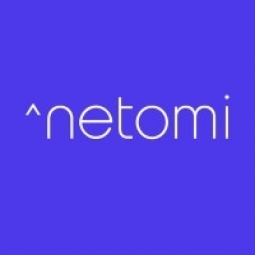Use Cases
- Onsite Human Safety Management
Services
- Training
About The Customer
WestJet is a leading airline that prioritizes the customer experience. The company is constantly expanding its operations with new destinations, impressive additions to its fleet, and global partnerships. WestJet is known for embracing innovation to delight its ever-expanding customer base with superior support. The company has a large customer base that has high expectations for immediate, accurate, and effective resolution of their queries. WestJet's customers use various platforms like Facebook Messenger, WhatsApp, and Google Assistant for their pre-booking, booking, day-of-travel, and post-trip support.
The Challenge
WestJet, a leading airline, was facing the challenge of meeting the rising customer expectations for immediate, accurate, and effective resolution of their queries. The company was expanding its operations with new destinations, impressive additions to its fleet, and global partnerships. With this expansion, the customer base was also growing, leading to an increase in customer support tickets. The company was finding it difficult to manage the surge in customer queries and provide superior support. The situation was further exacerbated during the Covid-19 pandemic when the airline was inundated with requests for rebooking or cancelling flights, and a barrage of questions including flying restrictions and cancellations.
The Solution
To address this challenge, WestJet introduced an AI solution named 'Juliet' into its workforce. Juliet was launched on Facebook Messenger, WhatsApp, and Google Assistant to assist with pre-booking, booking, day-of-travel, and post-trip support. Juliet was designed to immediately resolve nearly 700 highly repeatable queries while seamlessly escalating more complex issues to human agents. The AI solution was capable of scaling up instantly in times of crisis, providing immediate relief to the customer service teams. During the Covid-19 pandemic, Juliet was able to seamlessly scale operations and resolve the surge in volume, which at one point reached 200 questions per second.
Operational Impact
Quantitative Benefit

Case Study missing?
Start adding your own!
Register with your work email and create a new case study profile for your business.
Related Case Studies.

Case Study
Wearables for Connected Workers
Together, Honeywell and Intel have developed a IoT proof of concept (PoC) for the Connected Worker. The Connected Worker can take many forms - factory laborer, mine worker, first responder, firefighters and more. For each environment and worker role, a different selection of sensors may be appropriate to provide the most meaningful IoT-fueled dataset to represent that individual worker asset. As with most IoT solutions, it is critical to avoid being overwhelmed by a steady stream of meaningless data. Rather, it is essential to send select actionable intelligence to the cloud for visualization and customized alert notifications. The downside is that data from individual wearable devices - if viewed independently - can potentially cause false alarms and contribute to inefficiencies in a manpower as a result. Fusing sensor technology with big data processing (hub/gateway), analytics - all in the cloud - is the key to improving local intelligence as well as remote visualization of actionable intelligence.

Case Study
Underground Mining Safety
The goal was to produce a safety system to monitor and support underground mining operations; existing systems were either too simple (i.e. phone line) or overly complex and expensive, inhibiting deployment, and providing little-to-no support in event of an accident. Given the dangerous nature of the mining work environment and the strict regulations placed on the industry, the solution would have to comply with Mine Safety and Health Administration (MSHA) regulations. Yet the product needed to allow for simple deployment to truly be a groundbreaking solution - increasing miner safety and changing daily operations for the better.

Case Study
Facility Management Solution in Construction Industry
In the construction of Crown Towers in Perth, hundreds of workers enter and exit the construction site each day, totalling into thousands by the completion of the project. All of these workers perform different tasks and come from different agencies, making it difficult for supervisors to track who does what, when, and where on such a large-scale site. An easy-to-use access, security and facility management solution was required.

Case Study
Industrial Workforce Mobility for Improved Safety & Operations
Huntsman Corporation, a global manufacturer and marketer of differentiated chemicals, undertook an aggressive program to eliminate injuries, product defects, and environmental releases at their Port Neches facility. Termed “Project Zero”, this program required a completely mobile solution to empower operations and maintenance personnel to capture defects, track work progress and make process and safety related decisions in real-time.

Case Study
Improving Factory Worker Posture
A 49 year old factory worker with long-standing low back pain was referred to a ViMove clinic for assessment and treatment. The worker’s low back pain had been managed and resolved with acupuncture in the past. The patient reported severe low back pain worse in the morning after prolonged rest. He also had trouble straightening up and experienced constant stiffness and pain.

Case Study
WEST TEXAS GAS TRUSTS WIN-911 ALARM NOTIFICATION SOFTWARE
It became clear that the SCADA system was not an infallible means ofmonitoring field stations; the systems would sometimes lose connection with the host computer. This caused delays in personnel response to alarms and increased the risk of severe warnings not being received before corrective actions could be implemented. As a precaution, the alarm points had to be visually monitored and staff would be required to call the appropriate personnel if an alarm came through. Regulations wereestablished for timely reporting. The management at West Texas Gas quickly determined that a secondary alarm support system needed to be installed. They were seeking something that would be able to monitor variable tags from the OPC server as well as monitor custom tags that were built into the existing SV32 SCADA system to observe and report flare volumes.



